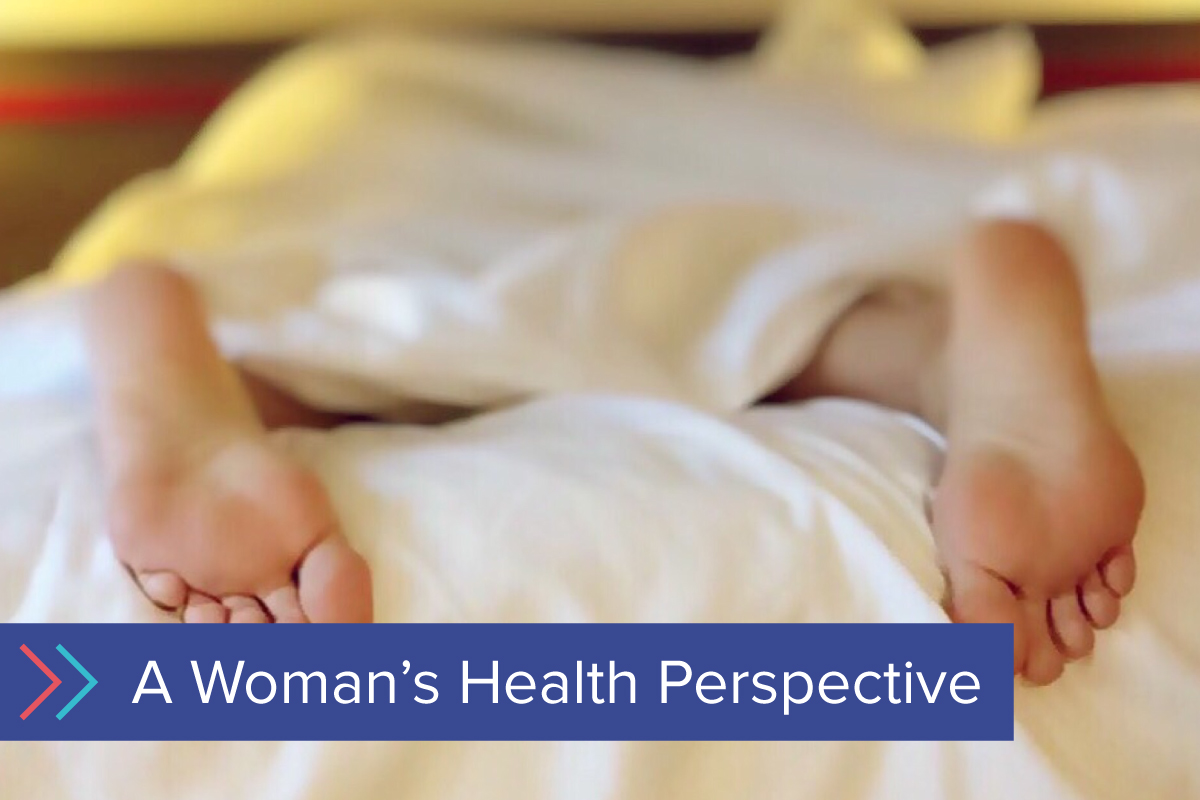Guest blog by Sarah Gorman, patient advocate and president of the Alliance of Sleep Apnea Partners (ASAP).
Like millions of women, I’ve lived with sleep apnea my entire adult life but was not successfully diagnosed and treated until quite late (age 56). I wish I had been diagnosed and treated earlier, because I have now developed several comorbidities that are somewhere between difficult and impossible to reverse. Undiagnosed and untreated, sleep apnea can do a lot of systemic damage.
It wasn’t that I didn’t realize that there was something wrong; I knew there was a problem—I just didn’t know what it could be. My friends all had much more energy and joie de vivre. I, on the other hand, felt old before my time, as early as my teens and 20s, and I was constantly exhausted.
Along the way, I was diagnosed or misdiagnosed with premenstrual syndrome (PMS), polycystic ovary syndrome (PCOS), and an irregular heartbeat called premature bigeminy. I also experienced a catastrophic fall, shattering my left patella and ripping all four quadriceps from their insertion points (this checks off the sleep apnea symptom of being accident-prone!), all before I turned 28.
Shortly after surgery for my broken kneecap in my late 20s, my symptoms worsened, and I awoke like clockwork after three and a half hours of sleep every night, unable to return to sleep for several hours. I again sought out help specifically for my sleep problem. I told the doctors that I was falling asleep almost before my head ‘hit the pillow,’ but I would then awaken after precisely three and half hours and was unable to return to sleep for hours. I was again misdiagnosed, this time with insomnia and depression. I denied the depression diagnosis even after attending a few sessions with a therapist and continued to focus on other aspects of my life, successfully pursuing a career as in-house labor counsel for a major corporation.
Twenty-five years later, with the help of an overnight polysomnogram (a sleep study test), a sleep doctor explained to me that the first major rapid eye movement (REM) cycle of the night starts at about three and half hours into sleep. In my REM cycle, I was obstructing (pausing breathing for more than 10 seconds) 83 times an hour, and my blood oxygen levels were becoming desaturated below 60% as I slept, setting off all sorts of alarms in my body. It reached the point that I couldn’t maintain REM sleep and was instead startled awake. If your body is forced to choose between sleeping and breathing, it will pick breathing every time.
I was unable to go back to sleep quickly after waking up because I couldn’t return to REM immediately. Rather, I had to wait until my body could get back into stage one sleep, which in my case took several hours. Oddly, I could feel when the stage one point arrived; I felt as though a reset button had been pushed, and my entire body relaxed. At age 56, I finally had a diagnosis and was introduced to positive airway pressure (PAP) treatment to help me sleep.
Why had it been so hard for me to get diagnosed up until this point? I think there were a few reasons:
First, I was seeking out a diagnosis as early as the late 1970s and early 1980s when the condition was very ill-understood and PAP treatment for sleep apnea was not yet available. (For perspective, I was diagnosed and successfully treated in 2004.) Beyond that, I also didn’t fit the stereotype for sleep apnea—I wasn’t male, middle-aged, or morbidly obese. In my 20s and early 30s, I also wasn’t overweight.
Moreover, no one had ever told me that I snored. When a woman complains of fatigue or exhaustion, sleep apnea is not often the first diagnosis that comes to mind.
During perimenopause and menopause, sleep apnea typically becomes much worse. It is then that women are often diagnosed for the first time due to seriously worsening sleep issues. Women may think they are going through “the menopause from hell,” when what is really happening is due to a loss of progesterone during menopause, their sleep apnea has become a health crisis. In my case, the crisis took the form of not only worsening sleep apnea, but intolerable cognitive issues, such as attention deficits, micro-sleep, and absence seizures, some of which (frighteningly!) occurred while driving.
Ultimately, getting diagnosed and into treatment was life-altering for me. Using PAP, I felt like a new person. I finally had the energy I had missed for years and could easily keep up with family and friends. Gone were the days of feeling like a perpetually exhausted zombie, just putting one foot in front of the other.
While fully successful and adherent treatment addressed my irregular heartbeat, absence seizures, micro-sleep, apparent “insomnia,” brain fog, and cognitive issues—and I am now regularly getting healthy REM sleep—it was too late for me to avoid some of the other serious, less reversible comorbidities of sleep apnea, such as type 2 diabetes, hypertension, and liver complications. These are now conditions I live with and have learned to treat, alongside my sleep apnea.
Women with sleep apnea are often misdiagnosed, but a misdiagnosis is not benign, as it can lead to mistreatment that may be harmful for patients as well as expensive for the health care system.
If there is any possibility that you have sleep apnea, you owe it to yourself and your family to get diagnosed, and to do so as early in life as possible. Don’t wait to take control of your sleep, and hopefully find a treatment to improve both your days and your nights.
